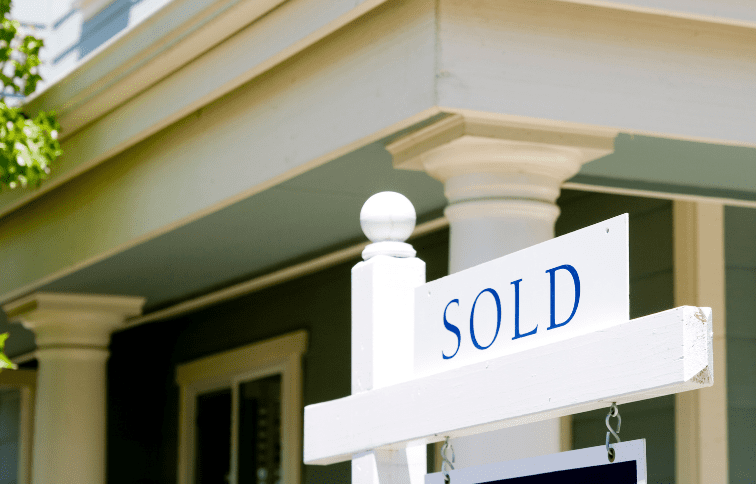Is homeowners insurance included with a new home purchase?

Even 26 years into this business, there are still surprises from time to time. Like the above question, for example. But, especially if this is a first home purchase, I can see why this assumption would be made. If you don’t know, you don’t know.
One of the factors driving this assumption comes from car manufacturers, of all things. Several have begun providing insurance at time of sale. Tesla is a great example. They offer Tesla Insurance, an auto insurance policy that is purchased via their app. It can be done before taking delivery of your new vehicle and so it appears to be “included” or “bundled” with the vehicle.
Another factor is the presence of insurance agents working in close conjunction with banks. A referral is made to the “in-house” agency or an agency that is a referral partner and so this also appears to be a “package deal” or “all-in-one” solution, especially if the mortgage loan officer helps get paperwork signed for the policy.
Homeowners insurance is a separate transaction and must be applied for separately
Regardless of how it appears, homeowners insurance is not “bundled” with a new home purchase. There are two reasons:
Homeowners insurance policies are based on the concept of insurable interest. The owner has the insurable interest and the policy is written in that owner’s name. New owners would have a new policy written to reflect their insurable interest. Most people have to take out a mortgage loan to purchase a home. That loan provides the money to do so. The homeowners insurance provides protection and the option to rebuild/repair a home if it suffers a covered loss, such as fire, wind or even lightning strike (just a few examples of the many types of losses). As you can see, these are two totally separate transactions. They are also governed and regulated by entirely different organizations.
In order to get homeowners insurance, an application must be completed and a policy issued, along with premium paid. But there’s a bit more to it than that….. Read on to see how you get to the finish line.
The homeowners insurance process
Once you’ve found “the house”, you’ll write an offer to buy. Once that offer has been accepted, that’s the time to contact your insurance agent, as it normally takes 30-45 days to finalize the sale (i.e. closing). IF you’re taking out a mortgage, you’ll need to have your insurance in order BEFORE the closing or else the loan won’t close.
Step 1- Determining “insurability”….homeowners insurance companies typically require the following:
Updates to the property within the last 20-25 years (could be different based on the state you’re in- I’m speaking Ohio here). This means heating system, roof, electric and plumbing. This also means a CENTRAL heating system in place, not solely heated by a wood stove, pellet stove or other supplemental heat, If there’s a pool, it needs to be fenced.Any supplementary heating systems need to be professionally installed and well maintained (think woodburning stoves).IF the property has had a prior issue, has it been addressed? Think water damage or fire damage. Just like you, insurance companies don’t want to buy a lemon. Existing damage or recurring damage could prevent you from getting a homeowners policy.Any dogs that have a history of biting? Or are a certain breed? Regardless of your thoughts on the matter, many insurance companies have restrictions on certain dog breeds or those that have bitten before (meaning they don’t want either).
Basically, the house needs to be a good risk, and one that has old systems, a lack of maintenance and/or extra hazards does not fall into that category.
Step 2- Determine the amount the house should be insured for.
Hands down this is usually the part that causes the most confusion. What you’re paying to buy the house is the market value. What insurance companies use is replacement cost. They are not the same (unless a brand new build). You can read about replacement cost in more detail.
Once the replacement cost has been determined, that figure becomes the dwelling amount (also called Coverage A).
Your insurance agent can then prepare a quote and discuss any additional coverage items such as Water Backup, Jewelry, and Guns.
Step 3- Working with lender to finalize
Somewhere in the middle of all of this, the loan officer needs to be contacted to find out all closing requirements. Usually that consists of proof of coverage (such as a binder), and often the invoice (as many lenders collect the annual premium at closing- especially when doing an escrow account). When those requirements have been prepared and sent, closing should proceed smoothly.
Step 4- Working with insurance agent to finalize
HERE is where the separation comes into play. The homeowners insurance is its own policy and requires a completed application to issue (like all insurance). So this could also be a warning sign as well- if you don’t sign an application, there is no insurance. Or if a policy materializes and you didn’t sign an application, that’s a whole other issue (yikes).



